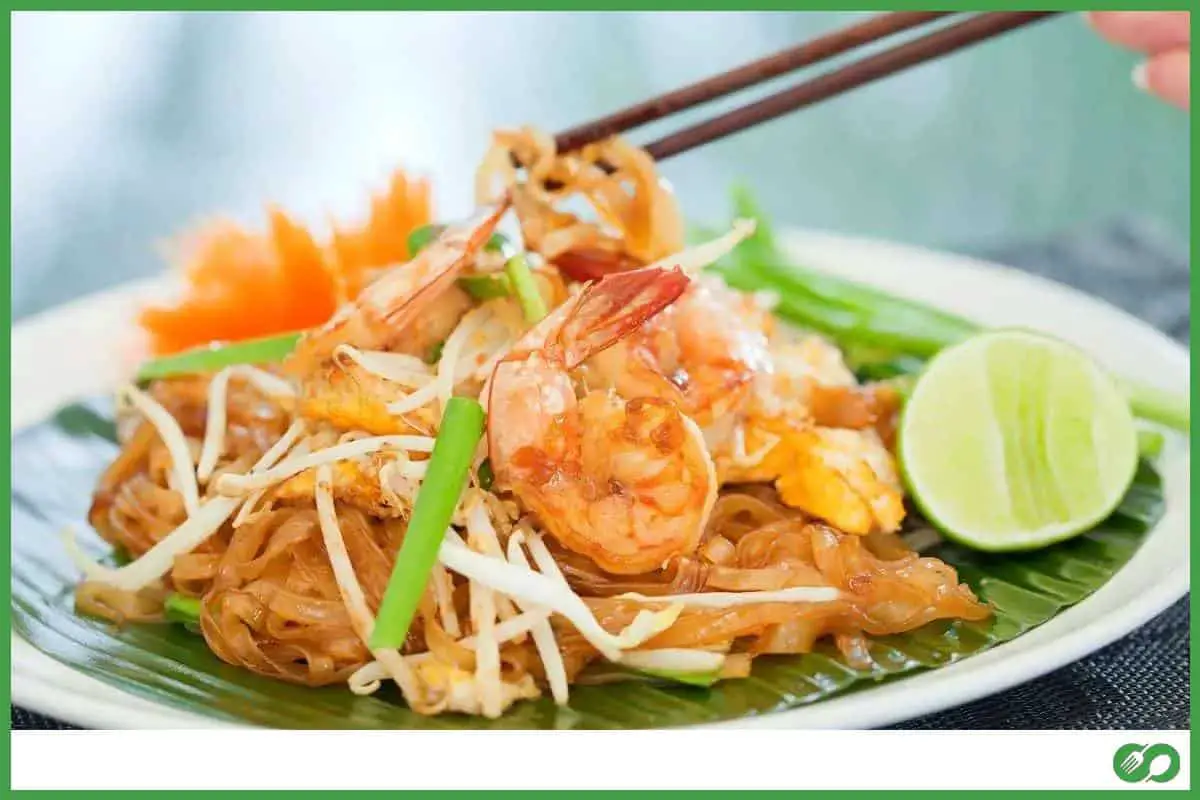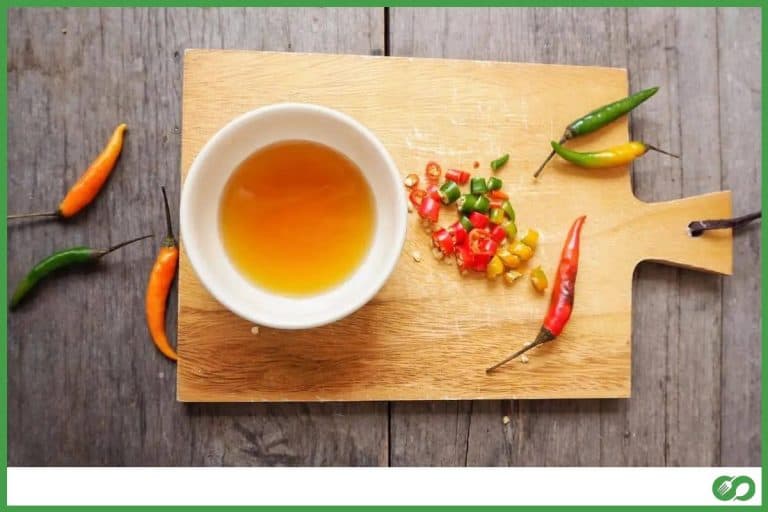Is Thai Food Gluten-Free? All You Need To Know
This post may contain affiliate links which means that, if you choose to make a purchase, I may earn a small commission at no extra cost to you.
Before you go looking for gluten-free alternatives, have you considered that a few cuisines across the globe are naturally, and largely already gluten-free? Apart from the odd dish or two here and there, some cuisines already use non-gluten ingredients, without having to simply find alternatives.
One such cuisine?
Thai.
Is Thai food gluten-free?
Soy sauce and noodles can contain gluten. However, rice noodles are gluten-free. A lot of gluten-free options when it comes to Thai cuisine, seeing as how a lot of it can be and is rice-based. You should also avoid fried items like tofu or even crispy fried veggies. They will often contain wheat flour.
How did gluten get into Thai?
To a lot of people in the United States, comfort food is fried chicken from scratch, cornbread, mac and cheese and apple pie for dessert. The French? Do we need to bring up all that lovely, golden, crusty albeit glutinous bread? That’s about as gluten as you can get.
Now let’s take a look at Thai food. Traditionally, Thai dishes should use gluten-free and dairy-free dishes: fish sauce, rice noodles and coconut milk.
When Thai cuisine began to increase in popularity in the United States, Thai restaurants became ‘westernized.’ It is pretty common. You’ll find a paneer tikka Big Mac in most Mcdonald’s stores in India because ultimately, a restaurant’s menu—and consequently the cuisine in question— does change to suit their customers’ taste.
So, in these westernized Thai restaurants, the fish sauce became soy sauce, and wheat-flour noodles and cream became more preferable to rice noodles and coconut milk. While soy is gluten-free, soy sauce, however, is gluten-based.
Now we understand how gluten wormed its way into Thai food, let’s take a look at some of the gluten-free dishes and ingredients that it has to offer.
Top ten gluten-free dishes
1.Gluten-free Thai curry
A Thai curry made with a variety of stir-fried vegetables in a gluten-free sauce is definitely doable. Most Thai restaurants offer a green or red sauce or a turmeric-based sauce which is as healthy as it is gluten-free.
2. Thai coconut curry with sticky rice
The same goes for a coconut curry on a bed of sticky rice, which is vegan, low FODMAP(Fermentable Oligosaccharides, Disaccharides, Monosaccharides, and Polyols) and gluten-free.
https://cookieandkate.com/thai-red-curry-recipe/
3. Pad Thai
Pad thai, with rice-based noodles, is a go-to for every gluten-free enthusiast.
https://againstallgrain.com/2020/02/17/gluten-free-pad-thai/
4. Thai Green Mango Salad
That fresh, biting tang from unripe mangoes is as reminiscent of Thai cuisine as it can get.
https://www.thespruceeats.com/thai-green-mango-salad-recipe-3217675
5. Tom Yum Soup
Tom yum soup can easily be made without gluten and served over a bed of rice noodles, sticky rice or some aromatic jasmine rice.
6. Baked Tofu in Thai peanut sauce
A nice bowl of peanut sauce-glazed tofu, topped with crunchy spring onions and served over a bed of rice is delicious and gluten-free.
https://www.thespruceeats.com/baked-tofu-in-thai-peanut-sauce-3378127
7.Thai Yellow Rice
Aromatic and flavoursome, a bowl of Thai yellow rice, with onions, garlic, peppers, turmeric, lime, saffron and peas just so happens to be gluten-free, as it is pretty.
https://www.thespruceeats.com/easy-yellow-rice-recipe-3217655
8.Thai Stir-fried noodles
https://www.thespruceeats.com/thai-stir-fried-noodles-with-vegetables-3217111
9. Mango Sticky Rice
Unless you are sweetening the tea with some condensed milk, most Thai desserts can be dairy-free and gluten-free. Mango sticky rice is the perfect blend of sweetness and tanginess. That it is gluten-free is just a bonus
10.Coconut custard
This is a recipe that you can go to town with. It is dairy-free, gluten-free, nut-free, soy-free and vegetarian!
Here are some more amazing Thai dishes that can be made gluten-free or even dairy-free for you can to try and experiment with:
- Mung bean candy
- Rice dumplings in a sweet and sour ginger soup
- Coconut custard
- Coconut balls
- Bananas served in coconut milk
- Sticky rice served with bamboo
What to avoid
We’ve read some amazing gluten-free and even vegan and dairy-free Thai dishes. But whether you are cooking for yourself or ordering in, or going out to eat, it’s important to know what to avoid, just as much as it is important to know all that you can eat.
So here’s a list of things to avoid when you are looking to go gluten-free for your Thai dishes.
1. Avoid fried items
Most fried Thai food, like tofu or even crispy fried veggies, will definitely have some wheat flour in there, as a part of the batter used to dip the veggies or tofu in before they are fried. Instead, you can try to find and use rice flour in the batter. Also, remember that it might be prudent to use a different fryer than the one used to fry wheat-coated items.
2. Avoid egg noodles
Rice is your best friend when you are on a gluten-free diet. This means that egg-based noodles or wheat-based noodles are out. When in doubt, confirm with the chef if the noodles are indeed rice-based, and if you are still doubtful, just stick with good old Thai sticky rice.
3. Avoid soy sauce
The sauce is the culprit, every time. In Thai cuisine, fish sauce, oyster sauce, mushroom sauce, and the biggest culprit of them all, soy sauce is used in pretty much all the dishes. While some fish sauces do come gluten-free and are safe to eat, all soy sauce, while technically soy-based, almost always contain wheat.
The back of the bottle is just not reliable and if you are a celiac you cannot afford to take the risk.
If you are cooking at home, you can always pop over to a gluten-free store that sells proper gluten-free sauces and buy your sauce. But you can never be too careful.
Is it hard to find gluten-free dishes?
It isn’t as hard as it used to be, finding food to suit your dietary requirements. Most restaurants today are happy to prepare something vegetarian, vegan or gluten-free. You’ve got gluten-free bread, and if that doesn’t tell you how far we’ve come, how much we’re willing to do to go off gluten, I don’t know what is.
However, that being said, it does not mean that all Thai dishes are gluten-free. If you are off gluten as a lifestyle change, or whether you are a celiac, everything you eat and read has to be taken with a grain of salt. So make your dietary needs and requirements absolutely clear.
Something you do need to keep in mind, however, is that while Thai food is largely gluten-free and dairy-free, it does, however, have a lot of nuts. So, if you are allergic to peanuts, groundnuts or any other kind, always make sure you talk to the chef about your allergies and carry an EpiPen!
Safety Precautions
We all love that, I get it. You should not be denied your favorite curry or pad thai because you’ve decided to or have to go gluten-free. So, what can you do?
1.Make your Thai food at home
It’s known to happen. People do cook Thai food at home as opposed to ordering takeout. If you are going gluten-free, congratulations, you are one of them now. The best way to monitor the ingredients in Thai food is to be the one to decide what goes in there.
Look up recipes, or take a cooking class. Cooking Thai food can be just as fun as eating it.
2. Become a regular
Find a Thai restaurant you trust, one that is open to gluten-free ingredients and alternatives and become a regular.
3. Thai Allergy Card
You read that right. Did you know that you can carry a Thai allergy card with you when you visit a Thai restaurant or even visit Thailand? Often, when language is a barrier, it can be hard to get your message or dietary requirements and allergies across to your waiter or chef.
It can also be hard to find out what ingredients your dish contains, and exactly what preparation methods are being used.
This is where a Thai allergy card comes in handy. You can download one from the internet, customize it with your list of allergies and preferences, print it and while you are at it, go ahead and laminate it to make it last longer. Always make sure to carry a few extra copies with you to the restaurant you are visiting.
If you are traveling and you really, really love Thai food, consider staying at a hotel or a BnB that has its very own kitchen. Pop over to the local market—a lovely way to explore whichever city or place you are visiting—and buy some gluten-free ingredients. Then come home and whip up something tasty and Thai for yourself and your family.



